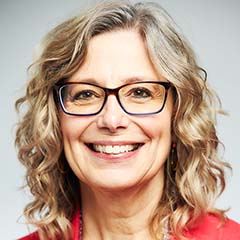
The Great Elephant Migration. marched through Newport, Rhode Island before heading to New York City. (Corey Favino, Courtesy Elephant Family USA and Newport Restoration Foundation)

Michelle Russell
Editor in Chief
Recently, I was part of The Great Elephant Migration. Okay, I was stuck in traffic on a Connecticut highway one evening in early September when a herd of life-sized elephant sculptures strapped to a flatbed truck pulled up alongside us. They were making their way from Newport, Rhode Island, to Manhattan, where 100 of them are now on display in the Meatpacking District. I had seen signs about and read up on the traveling elephant installation when I visited Newport earlier, so while I was startled to see the elephants suddenly appear in the next lane, I was delighted to put them into context.
The Great Elephant Migration, an awe-inspiring outdoor exhibition, tells a sustainability story. The elephants — made by a community of 200 Indigenous artisans in southern India who share their home with elephants in the wild — are meant to convey the need to cohabit with animals as our population growth encroaches on their habitat. The elephants are made from lantana, a toxic weed that suppresses the growth of vegetation animals need to survive. Clearing the forest of this invasive plant not only resulted in the elephants’ elegant, reedy facade, it helped restore the balance of nature.
The crafts people were compensated — plus their status was elevated in their community, key to the Maker Economy, the topic of our May/June issue cover story. My elephant tale is my roundabout way of getting to the theme of our September/October issue as well: networking. When I interviewed C2 CEO Anick Beaulieu, I was struck by a comment she made about one approach this innovative business conference takes to encourage people to interact: designing “beautiful environments,” she said, which “have the power to inspire and create things to talk about, to connect.”
We respond to beautiful environments and art similarly — experiencing them has a way of breaking down barriers to social connection. I saw this recently when I went to a fundraiser in Westerly, Rhode Island, where each artist in a local collective had donated one of their works. We sat in rounds surrounded by their framed paintings and artwork in the armory hall’s perimeter and were encouraged to note down our favorites.

Line Hachem’s artwork appears in our September/October issue. See the full issue as it appears in print in our digital edition.
This wasn’t a formal auction; instead, the admission tickets were randomly drawn. If you were lucky, you could nab your coveted piece before someone else did, but everyone took some art home for the cost of admission. The challenge was being able to hear your name announced. The room was overflowing with conversations — many among strangers who were enthusiastically comparing their picks and sharing why those pieces of art spoke to them. The fundraiser’s goal was to support the area’s artist community, but it had the side benefit of cultivating connections among those of us with a shared appreciation for their talents.
To read examples of how event organizers are making those connections the foremost benefit of attending their events, please read our networking cover story and CMP Series. And please take a moment to appreciate the lovely work of this issue’s artist, Line Hachem. Go ahead — we invite you to talk amongst yourselves.
Show Me More Than the Money
We hope the results of our Annual Salary Survey spark conversation, not just about industry compensation, but why the culture of so many organizations our event organizer respondents work for is ripe for an overhaul.
Events can also promote a culture that is less than inclusive and productive. Read how one fundraising professional aimed to change that with his own event, in the September/October issue’s Social Impact story.
On the Web
Learn more about The Great Elephant Migration at TheGreatElephantMigration.org and watch a “CBS Sunday Morning” episode on YouTube.
